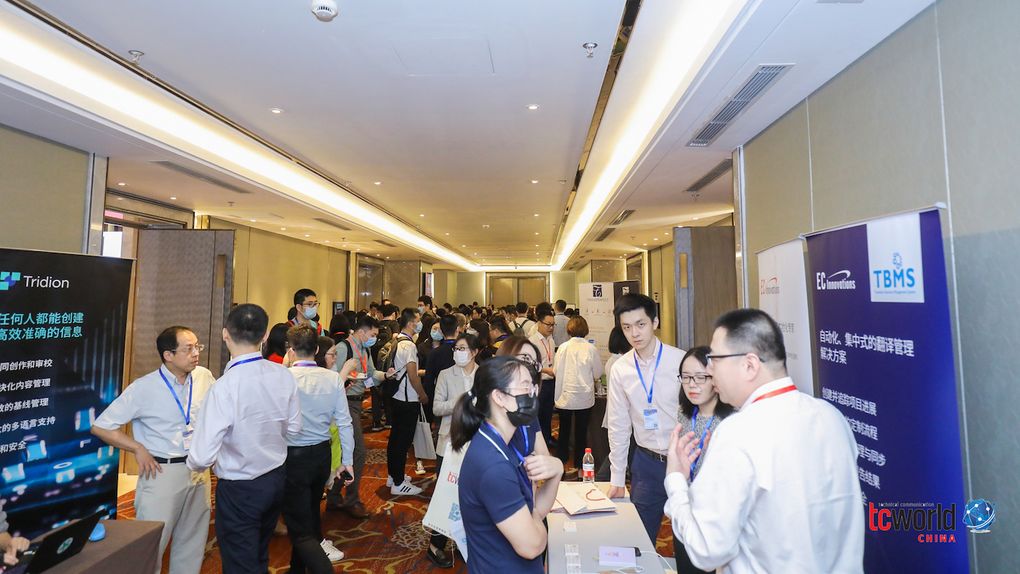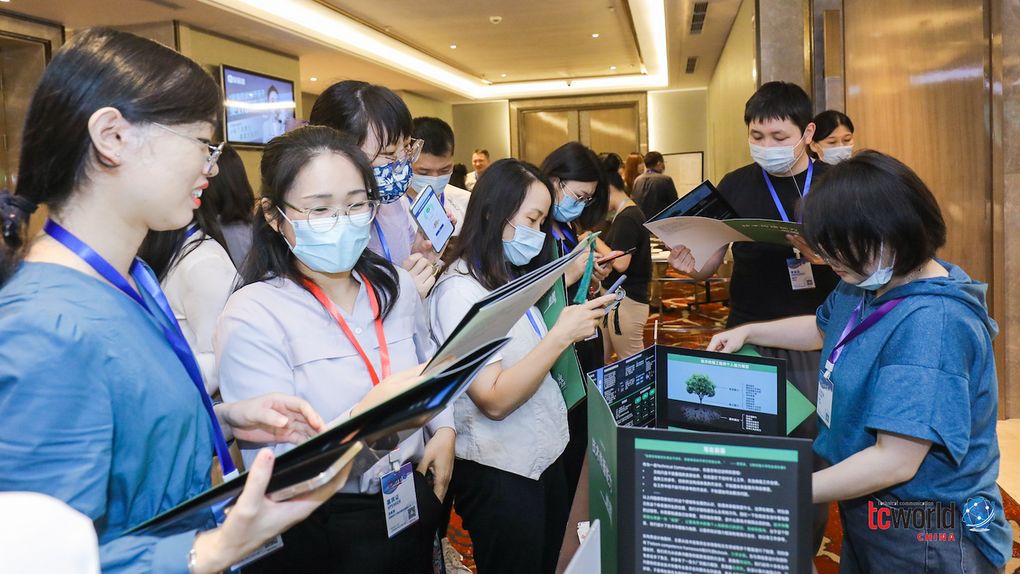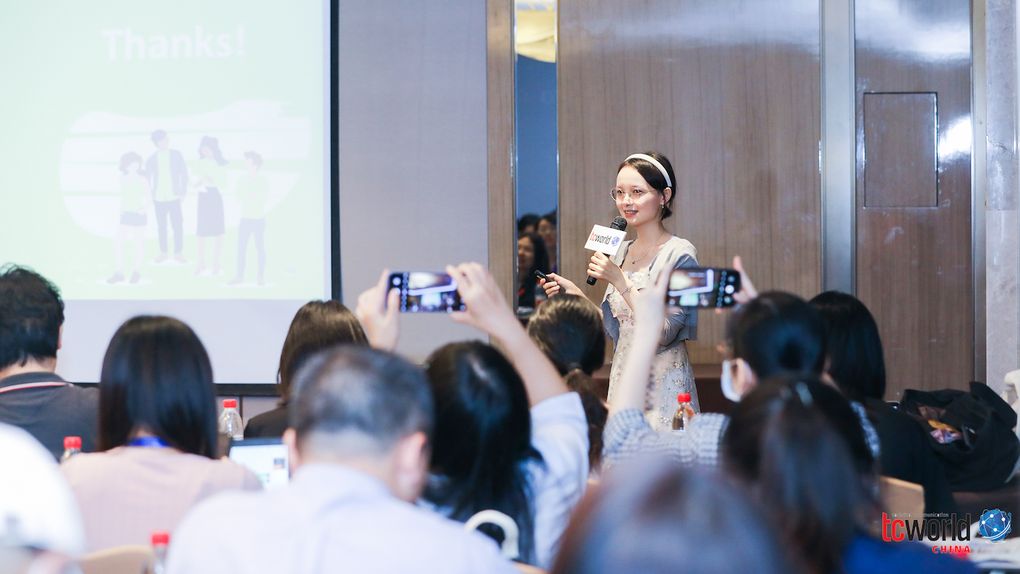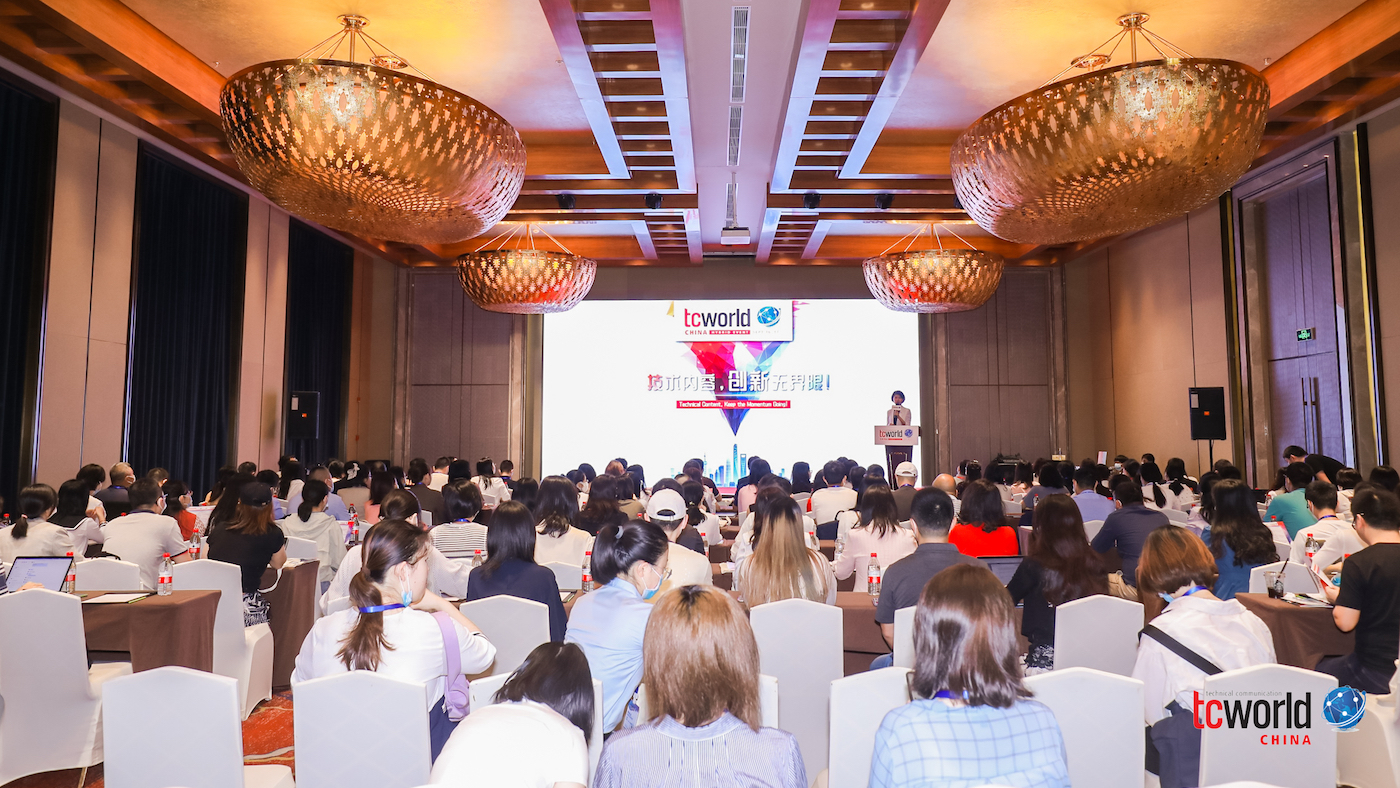Text by Wan Xinyue
The conference saw a combination of face-to-face gatherings and virtual Zoom meetings, which included 45 speeches and workshops held in Chinese or English. Speakers with backgrounds in data communication, translation, design, management, and computational linguistics presented topics on content delivery, content marketing, globalization and localization, information management, team management, user experience, and semantic AI.
One exciting highlight was the publication of the “Chinese Technical Communication Competency Map”, the first framework in the TC industry in China. Michael Fritz, CEO of tekom and tcworld, delivered the opening speech, while Tom Johnson, senior technical writer and creator of the blog “I’d rather be writing”, presented the keynote speech “Tech comm and marketing”.

Here are three presentations that clearly stood out to us:
From documentation to content experience
Erin Zhang and Tiffany Li are both content strategists at IBM and take active roles in driving the content design transformation within IBM. Based on the IBM China Content Design, their presentation introduced:
- The concept of a content strategy and Enterprise Design Thinking (EDT)
- Hands-on practice of how to apply EDT to content strategy
- The IBM showcase
During the technical writing process – and particularly in the planning stage – the content strategy guides the creation, delivery, and governance of content. It facilitates reaching customers by connecting the organizations’ goals with its users’ needs. Good content requires user analysis to prioritize content needs and ideas. In the subsequent developing stage, this enables the right format and message in the right place at the right time. Design thinking is a framework combining both theories and practice to provide users with a pleasant experience. EDT steps further and focuses on users, cross-discipline collaboration, and quick iteration. At IBM, the EDF loop starts with observations: from getting to know people, uncovering their needs, and testing ideas. It then moves to the reflection phase: Gaining an understanding, forming intent, and committing to decisions. The last step is taking action: Exploring ideas, prototyping possibilities, and driving outcomes.
Content strategists would at first determine the scenario and then discuss the typical persona. Only when strategists are in users' shoes can needs and problems be grasped. According to the “Forrester Total Economic Impact Study of IBM’s Design Thinking Practice”, EDT serves as a valuable approach to refine strategy, minimize risk, reduce cost, energize employees, and delight customers.

Building a product knowledge center in a one-stop shop way
Boasting 15 years of experience in information development and management, Bin Wang, Senior Technical Writer of HUAWEI Technologies Co., Ltd, explored the building of an information center. He noted that enterprises currently confront a number of issues such as information silos, fragmentation, and duplication in presenting information to employees and customers. On the one hand, people have been inundated with information. On the other hand, information is presented in different ways and complicated formats, and lacks diverse delivery channels. To improve the situation, he adopted the “knowledge graph”, a knowledge base that uses a structured data model to integrate data and AI to aim for an effective way of information management to help users locate the information they need faster. Infusing content with AI can improve the value of information. The approach of his team included:
1. Responding to the different demands of internal and external users, they combined methods such as search, classification, convergence, and visualization to build a one-stop information center that can gather information in a structured way.
2. Apart from technical writers, the resources for the center were gathered from various stakeholders. The team focused on improving information contribution and leveraging AI to win the user’s attention. Based on the data, developers could prioritize information and satisfy users’ needs by optimizing the use of resources.
Reshaping old Shanghai brands – a TC approach to marketing
May Li, Professor of Linguistics at Shanghai Tongji University and Vice President of the Shanghai Translation Society of Science and Technology, and Yuanyuan Li, Co-founder of TC Shanghai Community and Manager of Eaton Electric Asia-Pacific Content Marketing Department, discussed an extended TC approach to marketing, using the example of the reshaping of old Shanghai brands. First of all, the presentation introduced TC development in China: TC is conventionally designed for the production of technical documents, such as user manuals. “I am the person who writes user manuals” has become an easy-to-understand way of explaining the professional title of a technical communicator in China. Professor Li proposed that TC, in fact, enjoys broader applications in marketing scenarios, an emerging trend in the marketplace. In this context, she suggested that university teachers tailor their TC teaching to market needs. Through a case study, Yuanyuan Li demonstrated how students, and language students in particular, can be better prepared for producing marketing content using a TC approach. A market-oriented mindset, innovation that injects creative ideas and vigor into the old brand, and agile project management are taught by a professional technical communicator along with the teacher of the course. Both speakers expressed confidence in the prospect of TC in China and are actively promoting TC at universities and to the public, as well as offering advice to the local government.
Chinese technical communication competency map
The development of TC, both in education and industry in China, is still in its early stage. Theoretical bases and approaches, and industrial standards and frameworks suitable for the national context have not been formed yet. Compiled by the tcworld China Committee, the “Chinese Technical Communication Competency Map” was released during the 2021 tcworld China Conference. It is the first framework in the TC industry in China. It contains industrial standards, required competencies, and popular TC methods such as user analysis, document management, and information architecture for technical writing. Thus, it serves as a TC knowledge framework as well as a reference for Chinese technical communicators and writers.
Keep the momentum going
tcworld China 2021 discussed the latest advances in TC and explored the application of TC in marketing, translation, writing, and management. Increased recognition of the value of technical content and content management, globalization and localization of technical content, innovation in the presentation and delivery of technical content, and the growing popularity of TC in education and training are among the rising trends in TC in China. The conference also explored the application of linguistic AI, which strongly promotes the integration of digital technology and technical communication studies, and strengthened the connection between theoretical research and practical application.
During the closing ceremony, Monica Xie, organizer of the tcworld China Conference and senior technical writer, concluded that with the current prevailing globalization trend within Chinese enterprises, TC will certainly contribute to the international communication of Chinese companies overseas and help to tell the Chinese story.


